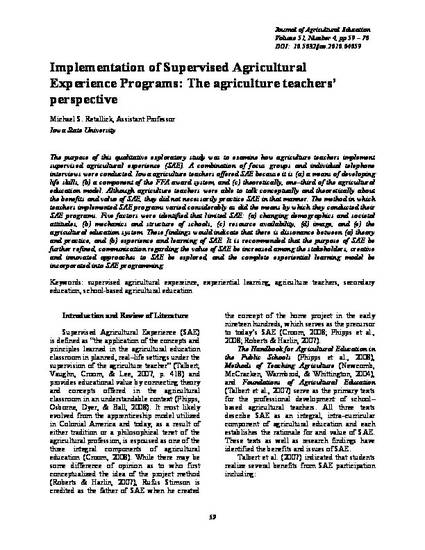
The purpose of this qualitative exploratory study was to examine how agriculture teachers implement supervised agricultural experience (SAE). A combination of focus groups and individual telephone interviews were conducted. Iowa agriculture teachers offered SAE because it is (a) a means of developing life skills, (b) a component of the FFA award system, and (c) theoretically, one–third of the agricultural education model. Although agriculture teachers were able to talk conceptually and theoretically about the benefits and value of SAE, they did not necessarily practice SAE in that manner. The method in which teachers implemented SAE programs varied considerably as did the means by which they conducted their SAE programs. Five factors were identified that limited SAE: (a) changing demographics and societal attitudes, (b) mechanics and structure of schools, (c) resource availability, (d) image, and (e) the agricultural education system. These findings would indicate that there is dissonance between (a) theory and practice, and (b) experience and learning of SAE. It is recommended that the purpose of SAE be further refined, communication regarding the value of SAE be increased among the stakeholders, creative and innovated approaches to SAE be explored, and the complete experiential learning model be incorporated into SAE programming.
Available at: http://works.bepress.com/michael-retallick/9/

This article is from Journal of Agricultural Education 51 (2010): 59, doi:10.5032/jae.2010.04059. Posted with permission.